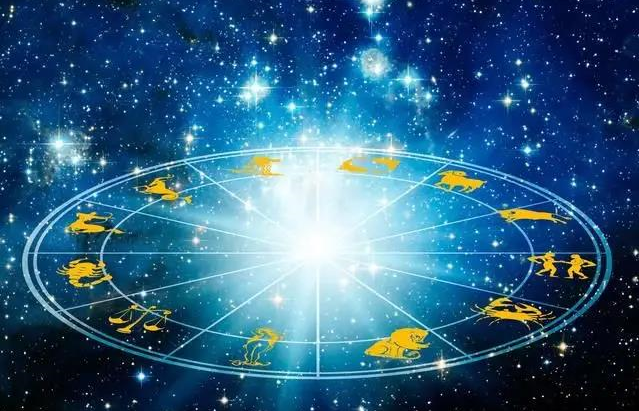算命的术语去哪里翻译[算命学术语]
关于算命的一些词语不太理解,想请大师给我翻译成白话语言。
算命的术语去哪里翻译你应该是立春后生日 日元属丁火 亥子丑三月水冻土冷 虽木旺但火不受生 从而造成算命的术语去哪里翻译了五行算命的术语去哪里翻译的反生为克(木多火塞)所以需要财克印 算命的术语去哪里翻译你财星属金 如果你不想佩带金饰也可以佩带猴 鸡算命的术语去哪里翻译的生肖饰品 希望可以帮到你
[img]算命 用英文怎么讲?
占卜的英文是divination。
divination 英[ˌdɪvɪˈneɪʃn] 美[ˌdɪvəˈneʃən]
n. 卜; 预言; 筮; 占卦;
[例句]They're part of an ancient Greek divination ritual.
他们是古希腊占卜仪式的一部分。
These characters were mostly prayers by Shang rulers at divination and sacrificialrites, as well as simple records.
这些文字,大都是商代统治者占卜祭祀时的祝辞和简单记事。
Will time turners or divination come into play in some way again?
也许时间转换器和占卜术又以某种方式发生了作用?
To foretell through or as if through the art of divination.
占卜,预言通过或似通过占卜术预言。
Isn't this the cup my master drinks from and also uses for divination?
这不是我主人饮酒的杯吗?岂不是他占卜用的吗?
算命术语!!!!!!!!!
呵呵!
是有点!
1. 什么是生辰八字
生辰八字或者说八字,其实是周易术语四柱的另一种说法。四柱是指人出生的时间、即年、月、日、时。在人用天干和地支各出一字相配合分别来表示年、月、日、时,如甲子年、丙申月、辛丑日、壬寅时等。每柱两字,四柱共八字,所以算命又称“测八字”。依照天干、地支沂涵阴阳五行属性之相生、相克的关系,推测人的体咎祸福。不过我们在这里要讲的不是如何“测八字”,而是如何算八字。
四柱八字排立
四柱以指一人出生的年、月、日、时。四柱排立是指找出一个人的生辰八字。主要分四步进行。
排年柱
年柱, 即人出生的年份用干支来表示. 注意上一年和下一年的分界线是以立春这一天的交节时刻划分的, 而不是以正月初一划分. 如某人阳历2000年2月4日22点17分生, 由于阴历2000年交立春是阳历2000年2月4日20点32分, 因此此人的年柱为2000年之庚辰,而非1999年之已卯.
排月柱
月柱, 即用干支表示人出生之年月所处的节令. 注意月干支不是以农历每月初一为分界线, 而是以节令为准, 交节前为上个月的节令, 交节后为下个月的节令.
一月 寅月 二月 卯月 三月 辰月 四月 巳月
从立春到惊蛰 从惊蛰到清明 从清明到立夏 从立夏到芒种
五月 午月 六月 未月 七月 申月 八月 酉月
从芒种到小暑 从小暑到立秋 从立秋到白露 从白露到寒露
九月 戌月 十月 亥月 十一月 子月 十二月 丑月
从寒露到立冬 从立冬到大雪 从大雪到小寒 从小寒到立春
节令含义:
正月立春: "立"是开始的意思, 表示万物复苏的春天又开始了, 天气将回暖, 万物将更新, 是农事活动开始的标志. 立春是公历的2月4日或5日.
二月惊蛰: 春雷开始轰鸣, 惊醒了蛰伏在泥土里冬眠的昆虫和小动物, 过冬的虫卵快要孵化了, 这个节气表示春意渐浓, 气温升高. 惊蛰是公历的3月6日或7日.
三月清明: 这个节气表示气温已变暖, 草木萌动, 自然界出现一片清秀明朗的景象. 清明是公历的4月5日或6日.
四月立夏: 这个节气表示夏季开始, 炎热的天气将要来临, 农事活动已进入夏季繁忙季节了. 立夏是公历的5月6日或7日.
五月芒种: "芒"是指壳实尖端的细毛, 在北方是割麦种稻的时候, 也是耕种最忙的时节, 芒种是公历的6月6日或7日.
六月小暑: 这个节气表示已进入暑天, 炎热逼人, 小暑是公历的7月7日或8日.
七月立秋: 这个节气表示炎热的夏季将过, 天高气爽的秋天开始. 立秋是公历的8月8日或9日.
八月白露: 这个节气表示天气更凉, 空气中的水气夜晚常在草木等物体上凝结成白色的露珠, 白露是公历的9月8日或9日.
九月寒露: 这个节气表示冬季的开始, 预示气候的寒凉程度将逐渐加剧, 寒露是公历的10月8日或9日.
十月立冬: 这个节气表示清爽的秋天将过, 寒冷的冬天开始, 立冬是公历的11月7日或8日.
十一月大雪: 这个节气表示降雪来得较大, 大雪是公历的12月7日或8日.
十二月小寒: 这个节气表示开始进入冬季最寒冷的季节, 会有霜冻, 小寒是公历的1月5日或6日.
以下是年上起月表.
月/年 甲己 乙庚 丙辛 丁壬 戊癸
------------------------------
正月 丙寅 戊寅 庚寅 壬寅 甲寅
二月 丁卯 己卯 辛卯 癸卯 乙卯
三月 戊辰 庚辰 壬辰 甲辰 丙辰
四月 己巳 辛巳 癸巳 乙巳 丁巳
五月 庚午 壬午 甲午 丙午 戊午
六月 辛未 癸未 乙未 丁未 己未
七月 壬申 甲申 丙申 戊申 庚申
八月 癸酉 乙酉 丁酉 己酉 辛酉
九月 甲戌 丙戌 戊戌 庚戌 壬戌
十月 乙亥 丁亥 己亥 辛亥 癸亥
冬月 丙子 戊子 庚子 壬子 甲子
腊月 丁丑 己丑 辛丑 癸丑 乙丑
排日柱
从鲁隐公三年(公元前722年)二月己巳日至今, 我国干支记日从未间断. 这是人类社会迄今所知的唯一最长的记日法.
日柱, 即用农历的干支代表人出生的那一天. 干支记日每六十天一循环,由于大小月及平闰年不同的缘故, 日干支需查找万年历.
另外,日与日的分界线是以子时来划分的, 即十一点前是上一日的亥时, 过了十一点就是次日的子时. 而不要认为午夜十二点是一天的分界点.
排时柱
时柱, 用干支表示人出生的时辰. 一个时辰在农历记时中跨两个小时,故一天共十二个时辰.
子时: 23点 --凌晨1 丑时: 1 点 --凌晨3
寅时: 3 点 --凌晨5 卯时: 5 点 --凌晨7
辰时: 7 点 --上午9 巳时: 9 点 --上午11
午时: 11点 --上午13 未时: 13点 --上午15
申时: 15点 --上午17 酉时: 17点 --上午19
戌时: 19点 --晚上21 亥时: 21点 --晚上23
日上起时表:
时/日 甲己 乙庚 丙辛 丁壬 戊癸
------------------------------
子 甲子 丙子 戊子 庚子 壬子
丑 乙丑 丁丑 己丑 辛丑 癸丑
寅 丙寅 戊寅 庚寅 壬寅 甲寅
卯 丁卯 己卯 辛卯 癸卯 乙卯
辰 戊辰 庚辰 壬辰 甲辰 丙辰
巳 己巳 辛巳 癸巳 乙巳 丁巳
午 庚午 壬午 甲午 丙午 戊午
未 辛未 癸未 乙未 丁未 己未
申 壬申 甲申 丙申 戊申 庚申
酉 癸酉 乙酉 丁酉 己酉 辛酉
戌 甲戌 丙戌 戊戌 庚戌 壬戌
亥 乙亥 丁亥 己亥 辛亥 癸亥
拿我的一位朋友举例:朋友生于1984年8月27日,此年为甲子年(书中查到);按照立月柱歌诀可知:他的年天干为甲,所以月以丙为首,所以他的立月柱为,癸酉;相应的他的日柱为癸巳(书中查到);而他的时立柱根据时立柱歌诀得知:癸巳为日干时,以壬配子时,所以时柱应为戊辰。这样就排出了他的生辰八字:“甲子 癸酉 癸巳 戊辰”。
孩子是每一位父母的希望,宝宝一出生,就有了个准确的时间,年月日时,即古人常说的生辰八字,这八个字包含了一个人出生时的天体运行的基本状态,也蕴含了一个人今后的命运。
要得到正确的出生时间,白天以日晷仪测量最准。钟表时间是人为的平均时和地区标准时,必须依节气(太阳黄经)计算“真太阳时差”与依出生地计算“地方经度时差”,才能得到真正的出生天文时间。
推夜子时法(妥否?):
夜子时,与正子时不同,推法亦稍异。查子时之时间,由夜间十一点钟开始,至一点钟为止。在夜十一点至十二点之间生人者,乃是夜子时。是时为今夜之子时,乃属于今日之内。十二点钟后,属明日。所谓夜子时者,乃今日之夜,非明日之早。正子时者,乃明日之早,非今日之夜也。一时有两点钟,前一点钟是夜子,后一点钟是正子。遁干之法,与日上起时法,稍有区别。必须于遁得亥时之后,再加遁一位也。
例:假如丙午年,庚寅月,乙丑日,十一点钟后,十二点钟前,夜子时生。歌诀云:乙庚丙作初。是乙日子时(正子)遁丙子,依次顺数丁丑,戊寅,己卯,庚辰,辛巳,癸未,甲申,乙酉,丙戌,丁亥,夜子时须即戊子也。
《克择讲义》:每午后十一点五十九分五十九秒五十九微为夜子,属阴; 就是上四刻,原作现日之额。若超过十二点起至一点内止,则是早子明日,作下四刻,属阳,万年不易。
自古至今甲己日起甲子时,夜子原起甲子相同,加注夜子可也。
周易算命 四柱八卦用英文怎么说?
周易算命 "Zhouyi Fortune-Telling"
四柱八字或简称八字算命的术语去哪里翻译:Four Pillars of Destiny (Ba Zi)
八卦 The eight trigrams
易经概述:
The I Ching (Wade-Giles), or “Yì Jīng” (Pinyin); also called “Classic of Changes” or “Book of Changes” is one of the oldest of the Chinese classic texts.[1] The book is a symbol system used to identify order in chance events. The text describes an ancient system of cosmology and philosophy that is intrinsic to ancient Chinese cultural beliefs. The cosmology centres on the ideas of the dynamic balance of opposites, the evolution of events as a process, and acceptance of the inevitability of change (see Philosophy, below). In Western cultures and modern East Asia, the I Ching is sometimes regarded as a system of divination. The classic consists of a series of symbols, rules for manipulating these symbols, poems, and commentary.
易经算命的术语去哪里翻译的组成:(易经和易传)
By the time of Han Wu Di (汉武帝 Hàn Wǔ Dì) of the Western Han Dynasty (circa 200 BCE), Shi Yi was often called Yi Zhuan (易传 yì zhùan, “Commentary on the I Ching”), and together with the I Ching they composed Zhou Yi (周易 zhōu yì, “Changes of Zhou”).
易经算命的术语去哪里翻译的名字解释:
* 易 (yì), while as a verb it implies “to change“ or 'to exchange/substitute one thing for another'.
* 经 (jīng) here means “classic (text)”, derived from its original meaning of “regularity” or “persistency”, implying that the text describes the Ultimate Way which will not change throughout the flow of time. This same character was later appropriated to translate the Sanskrit word 'sūtra' into Chinese in reference to Buddhist scripture. In this sense the two concepts, in as much as they mean 'treatise,' 'great teaching,' or 'canonical scripture,' are equivalent.
The I Ching is a "reflection of the universe in miniature." The word "I" has three meanings: ease and simplicity, change and transformation, and invariability.[2] Thus the three principles underlying the I Ching are the following:
1. Simplicity - the root of the substance. The fundamental law underlying everything in the universe is utterly plain and simple, no matter how abstruse or complex some things may appear to be.
2. Variability - the use of the substance. Everything in the universe is continually changing. By comprehending this one may realize the importance of flexibility in life and may thus cultivate the proper attitude for dealing with a multiplicity of diverse situations.
3. Persistency - the essence of the substance. While everything in the universe seems to be changing, among the changing tides there is a persistent principle, a central rule, which does not vary with space and time.
— 易一名而含三义:易简一也算命的术语去哪里翻译;变易二也;不易三也。 commented on by Zheng Xuan (郑玄 zhèng xúan) in his writings Critique of I Ching (易赞 yì zàn) and Commentary on I Ching (易论 yì lùn) of Eastern Han Dynasty.
四柱:
* The four pillars is an English translation of the Chinese dynastic phrase "Shi Chen Ba Zi".
* The Chinese term (时辰八字 , Shi Chen Ba Zi) literally translates to "Hour of the Eight Characters".
* It is also under the Chinese term (四柱命理学, sei cyu ming lei hok) which literally translates to "The Four Pillars Life-ology".
* It is commonly referred to by the shortened names of "Four Pillars" or "Ba Zi". One of the most frequently used alternate phrase is "Four Pillars of your birthday".
八卦:
The Bagua (Chinese: 八卦; pinyin: bā guà; Wade-Giles: pa kua; literally "eight symbols") are eight diagrams used in Taoist cosmology to represent a range of interrelated concepts. Each consists of three lines, each either "broken" or "unbroken," representing a yin line or a yang line, respectively. Due to their tripartite structure, they are often referred to as "trigrams" in English.
The trigrams are related to Taiji philosophy and the Wu Xing. The ancient Chinese classic I Ching consists of the 64 pairs of trigrams (called "hexagrams") and commentary on them. The interrelationships among the trigrams are represented in two arrangements, the Primordial (先天八卦), "Earlier Heaven" or "Fuxi" bagua (伏羲八卦), and the Manifested (后天八卦), "Later Heaven," or "King Wen" bagua. The trigrams have correspondances in astronomy, astrology, geography, geomancy, anatomy, the family, and elsewhere.
The eight trigrams are: Qian 天, "Heaven;" Xun 风, "Wind;" Kan 水, "Water;" Gen 山, "Mountain;" Kun 地, "Earth," Zhen 雷 "Thunder," Li火, "Fire;" and Dui 泽, "Lake."
谁知道"算命先生"怎么用英语翻译的吗?
soothsayer预言者,占卜者,算命者
fortune-teller算命先生,能告诉你未来的人
prophet预言家,先知者
算命用语,有人帮我翻译一下吗?
这是用名字算命算命的术语去哪里翻译,来源书《五个剖相法》上面算命的术语去哪里翻译的术语。
看来算命的术语去哪里翻译你选择的名字的的笔画非常好。 宁可信其有算命的术语去哪里翻译,不可信其无。
算命的术语去哪里翻译的介绍就聊到这里吧,感谢你花时间阅读本站内容,更多关于算命学术语、算命的术语去哪里翻译的信息别忘了在本站进行查找喔。微信号:ymsc_2016
相关文章
发表评论
评论列表
- 这篇文章还没有收到评论,赶紧来抢沙发吧~


